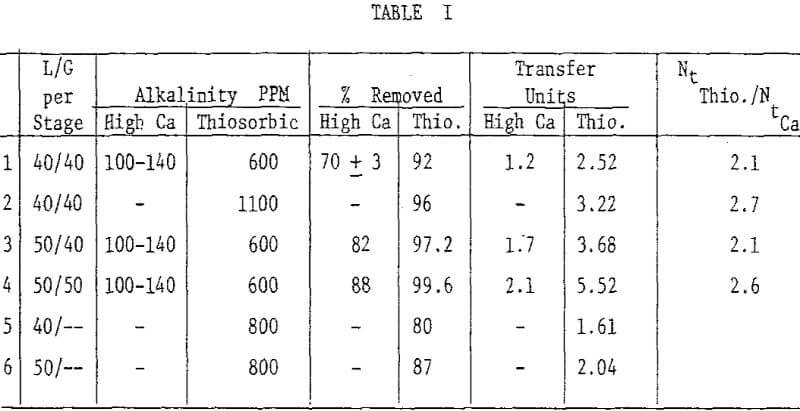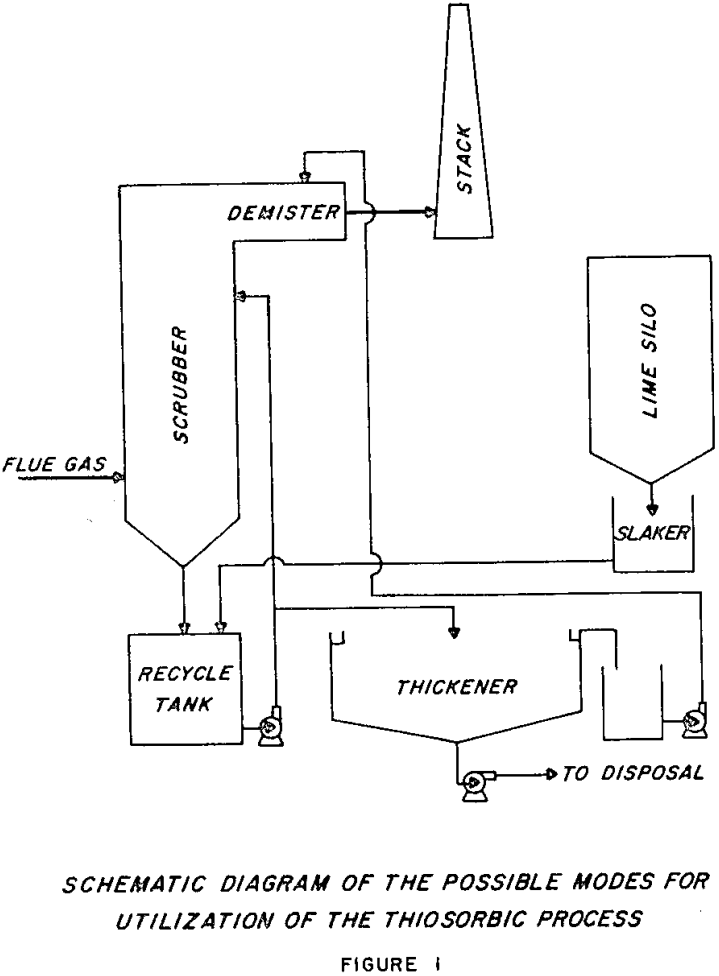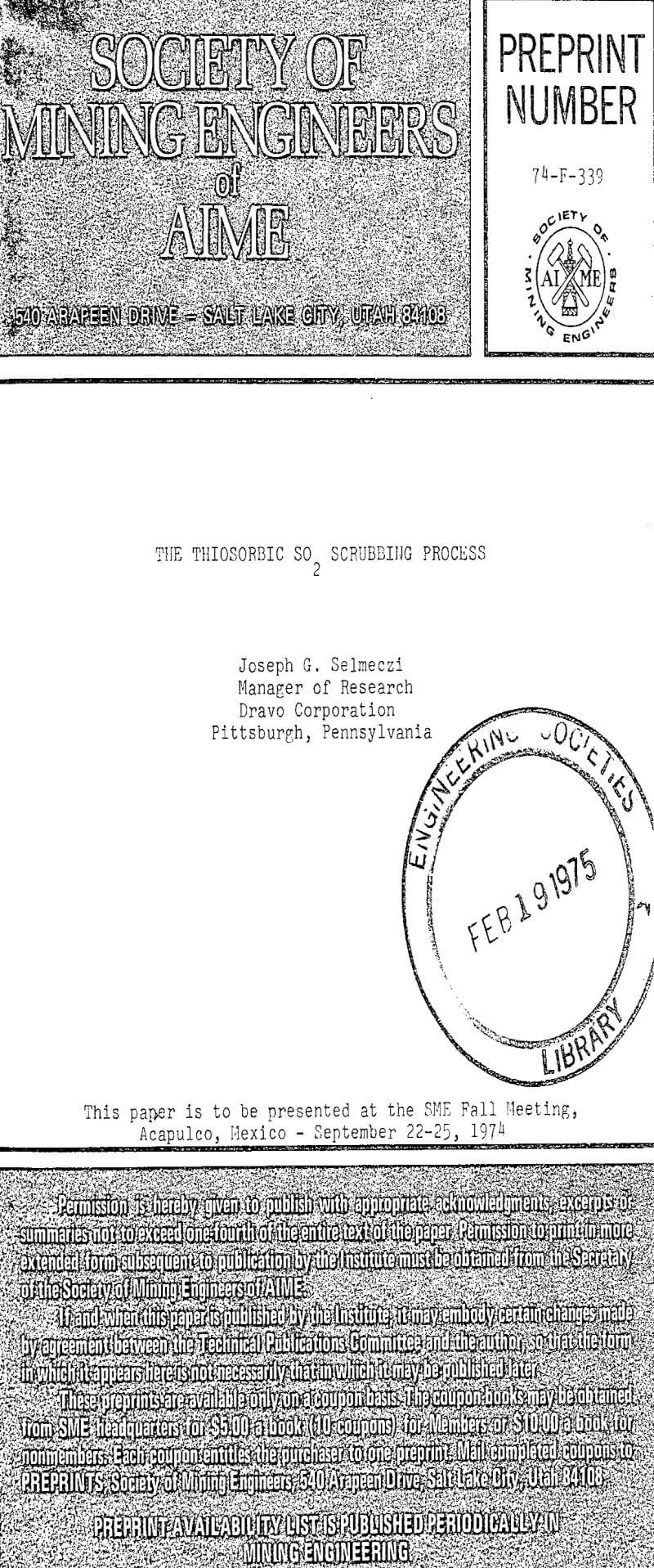Table of Contents
Lime and limestone-based SO2 scrubbing processes have demonstrated reasonably good success in removing low concentrations of SO2 from flue gases. While most of the operating problems experienced in the early days of scrubbing have been worked out, problems usually increase and removal efficiency drops with increased amounts of SO2 present in the gas stream.
Thiosorbic Process Chemistry
The Dravo Thiosorbic process utilizes the advantages of the double-alkali concept while avoiding some of the disadvantages. It is based on the principle that the magnesium sulfite, bicarbonate and carbonate are much more soluble than their calcium equivalents, and can produce a solution with high dissolved alkalinity.

In a nutshell, the SO2 is absorbed and neutralized by the sulfite ions, resulting in a solution of magnesium bisulfite. During lime addition to the mix or recycle tank, one-half of the bisulfite ions precipitate out as calcium sulfite, the other half is regenerated for further neutralization. In this fashion, the soluble magnesium sulfite does the scrubbing and the absorbed SO2 is removed as crystallized calcium sulfite. Since the neutralization is performed by the dissolved alkaline species, there is no need for the presence of excessive amounts of solid reagents or liquid hold-up in the scrubber.
Pilot Plant Experiences
A two-stage 1500 CFM venturi scrubber was operated at a power plant burning bituminous coal with an average sulfur content at 3.5%. The SO2 content in the flue gas varied between 2700 and 3200 ppm, typically close to 3000 ppm. The liquid-to-gas ratio was maintained at 40 gallons per 1000 ACFM in each stage except for special tests. The program involved the testing of two commercially available limes with high Ca availability, designated as limes 1 and 2, and several batches of Thiosorbic lime which were developed by Dravo especially for SO2 scrubbing. The total alkalinity demand for 80 L/G is 530 ppm and for 40 L/G, 850 ppm.
The ratio of the theoretical number of transfer units with Thiosorbic lime and with straight lime at identical L/G ratios is approximately 2.3, indicating that one scrubber operating in the Thiosorbic mode does the job of 2.3 scrubbers using regular lime. It is also apparent from Table I that by increasing the dissolved alkalinity in the Thiosorbic process, the removal efficiency and the Nt can be further increased.
A laboratory scale (50 CFM) pilot scrubber was operated scrubbing the gas generated by burning natural gas enriched with SO2. The scrubber consisted of two stages, a venturi followed by a spray tower. Examples of the tests with finely ground limestone, lime and Thiosorbic lime are given in the following table. The residence time in the recycle tank was 1-½ minutes for lime and Thiosorbic lime and 16 minutes for limestone.
Calcium sulfate forms a strong ion pair, which at saturation contains 150-220 ppm calcium. Some dissolved calcium in excess of this value is necessary to create a saturated solution for sulfate even in solutions having a very high sulfate content. Due to the presence of high sulfite ion concentrations in the Thiosorbic process water, the dissolved calcium concentration can be controlled and kept below 200 ppm and is typically between 30-100 ppm.
In view of a desire for a completely closed loop system, it is important to reduce the amount of fresh water requirements in a scrubbing system. In this respect, the buffered and non-scaling property of the clarified thickener overflow offers several opportunities for utilization in place of fresh water, such as pump seal and demister wash water.
Contrary to the sodium- and ammonium-based double-alkali process, the Thiosorbic process requires small effort to reduce the loss of its soluble alkali. Normal sludge thickening techniques are sufficient to reduce the loss of magnesium ions. This can be justified for two reasons:
- MgO is the cheapest available base when supplied as a constituent of the Dravo Thiosorbic lime, and
- It can be removed from the solution during disposal as a rather insoluble hydroxide when a small amount of lime is added to the thickener underflow sludge.



